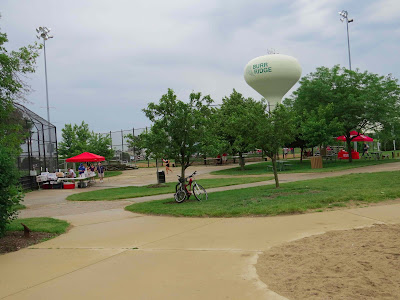As many of you know, I am married to a Brazilian. A Brazilian of Italian and Portuguese descent. Which is to say that he loves great food but he does not want to pay much money for it. Fortunately I am American of Dutch descent which means I eat anything but also hate to pay for any of it. Imagine my husband's delight when he found and bought a book called
A Guia da Culinária Ogra (review here), which we refer to as Ogros. Ogros (or Ogres) are restaurants that are not necessarily pretty or chic but serve good simple food inexpensively. In fact there is a whole list of rules on who can be be an Ogre: if the restaurant has "Chez" or "Bistro" in the name, they are OUT. Preference for old crabby waiters and certainly no valet parking.
I am game. I have been now to a place that was covered every inch in Corinthians stickers, posters, banners and flags (Corinthians is the Oakland Raiders of Brazil--ha, can't wait for the comments from
Corinthianos on that) with great food from the northeast region of Brazil. I have been to Dona Onça, a fabulous fun jaguar-themed restaurant in the Copan building. I have been to several no-name but only street address "establishments". And I have eaten well. And the places have been clean, though not necessarily beautifully kept--I cannot imagine my mom rolling with the linoleum floors and waxy table"cloths". Forget speaking English. Forget even thinking "Imagina na Copa". The World Cup will come and go and these folks simply won't care. Because they are here for the locals.
Hands down my favorite so far has been the Galinhada do Bahia. Before I talk about my love for the place, though, I must express my love for their website. The
English website in particular. They have been "hit" since April 28, 1992. And just the description of the place would have made me sign up immediately: "The house has a special glamour, which has a unique decoration and criate [sic] a scenic playpen with typical stamples from several states;.." (all spelling unique to their website...).
We didn't get the benefit of this description before heading over. We were near the Carandiru area and my husband pulled out the book and we put the address in gps and we were off. The place turned out to be down a tiny alley right next to the Portuguesa soccer stadium. We had to park outside the alley then wander down between cars on blocks, neighbors chatting and clothes hanging out to dry farther down the alley. We turned a corner and there it was. Photo above. A visual cacophony of phrases, stickers, signs, etc.
 |
| I admit this photo was taken after 2 beers. Tilt your head, okay? |
Inside, there were at least 20 long family-style tables. We had arrived early (1 pm) on a Saturday and found a table near the giant coolers of beer, the empty bottles, the cachaça tank and the buffet of side dishes. We were immediately greeted by a middle-aged waitress who asked if we had ever been there before. From our agog status, I think she already knew the answer and was simply amusing herself. We decided on the rodizio (hmmm, how to translate--a selection of) of
galinhada ("Galinha" is a hen, and a "galinhada" means LOTS of it). It came with three different dishes of chicken, one was the
molho pardo or blood sauce (don't knock it til you try it--okay, vegetarians, skip that but there's stuff for you!), then
baião de dois (errr, rice and black-eyed peas dancing together) and vegetables of every sort, more rice, more mandioca, more FOOD. The four of us (our twin 6-year olds were there too) nearly exploded and I think we ate about half of the food on the table. Max.
 | | |
| A small selection of the side dishes. |
 |
| Enormous vats of cachaça. And other stuff. It's all casual...and out of focus... |
As we were waddling out, Bahia came over to say hello and shake our hands. Bahia is, of course, the owner of the Galinhada do Bahia Restaurant, and an icon. His photo graces every menu, the website, posters on the wall, and he makes sure to greet every guest. I made every attempt to understand his northeast accent and just nodded and smiled. My husband mentioned later that I had agreed to give Bahia one of my kids, but that's okay. We made it out into the sunshine.
Highly recommended. Skip the tourist restaurants of Jardins and head on over to Bahia's place. You'll feel right at home!





































